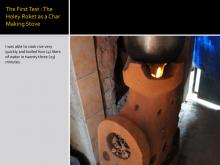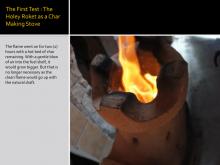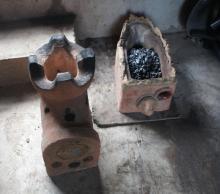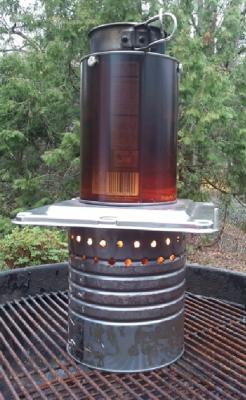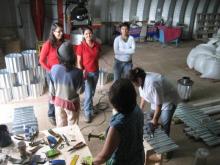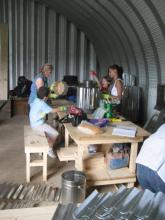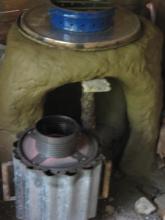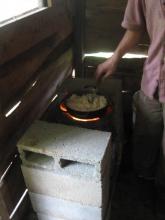The Peko Pe TLUD project in Zambia is going well.
" The main principals for our projects I will call it community based participation both for fuel and for stove productions. Utilization of local resources with other words.. The Peko Pe is designed for production by local tinsmith with the tools they might have. They only need a template and a model; they have the knowledge how to make it.
" First of all we discuss the need of changes, and then on the fuel side we start up with registration of alternative biomass for fuel for briquetting, energy forestry for fuel production. We always start with the fuel .to be sure there is sufficient quantities and to an affordable price.
"The charcoal business, which represents about 15 % of the adult population, has to be involved from an early stage of the project. All kind of activities on the household energy sector will in one or another way have an influence of their business, and with biochar we don’t know what will happen, but that is one of the ting we will try to find out. Any how for the charcoal business it is just to change from charcoal to alternative biomass for household energy.
"The energy loss by production of biochar for soil improvement is almost equivalent to the energy needed for the farmer to cook if you include the African way of thinking time is coming not like by us time is running That is a big difference. A household need about 2,7 kg charcoal a day for cooking. Form about 10 kg of dry wood you will get 2,7 kg of charcoal for one day cooking and no biochar. From .10 kg of dry wood you will get 10 kg of woodchips and that will be for 2 ½ day of cooking into a TLUD-ND. and about 2.7 kg of biochar. The pilot project will tell us if this is right or wrong."
" A common Miombo forest in Africa will give about 3 ton wood per ha a year. 3 ton of dry wood will give 800 kg of charcoal. A household of 5 consume 2-3 kg charcoal a day or about 800 kg a year. To produce 3 kg of charcoal you need 10-12 kg of dry fire wood in a common kiln. That will give one day cooking on a charcoal stove, and almost no biochar. 10-12kg dry chopped wood will give 3 days of cooking on a TLUD-ND or another FES and 2.5 kg of biochar
Energy forestry using just the sprouting every year can give up to 10 ton wood per ha a year, easy to cut to appropriate fuel for TLUD-ND’s or other types of FES. By adding some biochar to soil of bad quality 20-30 % increased yields can be obtained, which will give more food, more household energy, more jobs, better economy, better health for women and children and saving the forest. It can probably be as simple as this and is that not some of what we are looking for and need?
We know some changes have to take place on the household energy sector and we have to start somewhere. Why not start with small scale farmers on sandy soil, and from there develop the new household bio-energy strategy for developing countries. Probably also with the charcoal business, they have the whole infrastructure intact and can easy change from charcoal to alternative biomass like chopped wood or pellets from agriculture and forestry related waste. "

